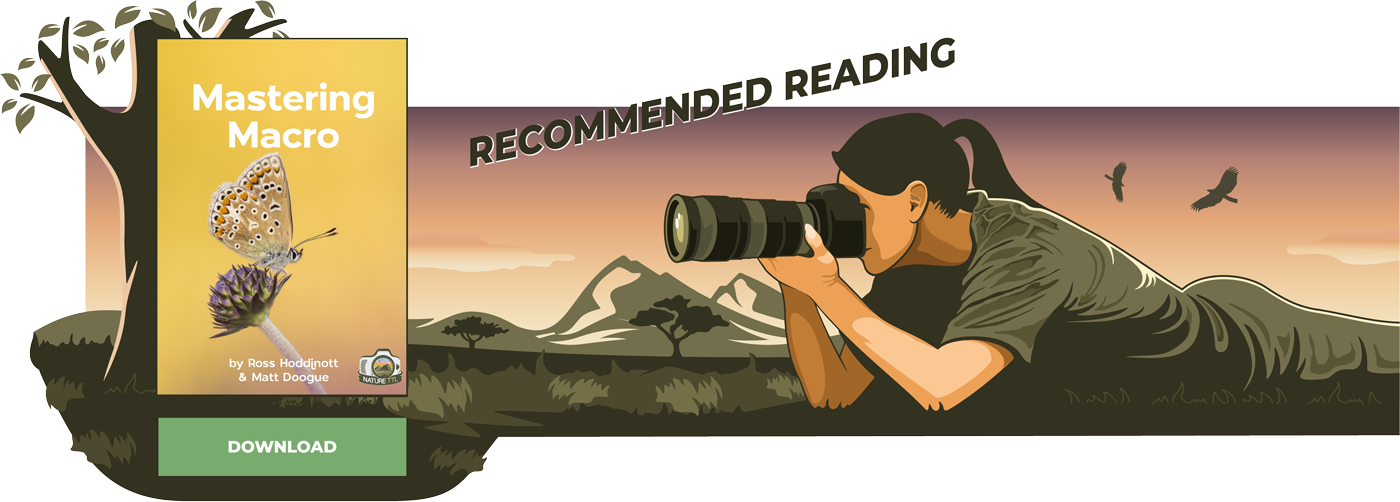Backlighting in Macro Photography

From feathered antennae to needle-sharp stinging hairs, many macro subjects have fine details that really come to life with a bit of backlighting. Whether from natural light or flash, understanding how to add this magic ingredient to your compositions will create drama and add definition to your macro photography.

Picking the Right Subject
Subjects with interesting outlines or thin, translucent features usually respond well to backlighting. Flower petals and leaves can be transformed, revealing networks of structures not normally visible.



Many invertebrates are also translucent, and as an added bonus can sport feathery antennae and hairy legs that look stunning when picked out with appropriate backlighting.

The rest of this article covers three different techniques for introducing backlighting into your macro photography.
Technique 1: Working with Natural Light
Sunrise and sunset are often the best times for achieving backlit macro images with natural light, as the sun is lower in the sky and has a beautiful, warm tint to it. Shooting towards your light source can create lens flare. To reduce the risk of this, use a lens hood and make sure the front element of your lens is clean and spotless. Even small smears on your front element can create large flare spots. Often the strongest, most dramatic backlighting will be achieved when the sun is almost peeping down the lens, but its disc isn’t quite in frame. Be careful not to look at the sun through your lens as this can be damaging to your eyes.

spider.
Technique 2: Exposing for the Flash
When using a flash for backlighting, it is obviously important to get it off the camera so it can be positioned somewhere behind the subject. A flash positioned on top of your camera is of no use for backlighting. Off-camera leads are a cheap and reliable means of achieving this (here are some for Nikon and Canon), whilst radio triggers offer a bit more flexibility in terms of positioning.

This harvestman was backlit with a single off-camera flash. Even though it was photographed in sunny conditions, the sunlight hasn’t registered as I have exposed for the much brighter flash. All the light we see in the picture has come from the use of the flash.
For dramatic results, you can expose for the flash rather than the ambient light, giving a black background that will really make your subject stand out. To achieve this, put your camera into Manual mode. Unless you are working in bright sun, camera settings of ISO100, f16, 1/200sec will record very little, if any, of the ambient sunlight, creating a ‘black canvas’ onto which you can paint light with your off-camera flash.
Next, you need to set the power of your flash so that you get just the right exposure. Most flashes offer a TTL mode and a Manual mode. I generally opt for Manual mode as I can then achieve consistency in a series of shots and TTL mode has a habit of getting things wrong when it really counts! If needed, I do a test shot to gauge how much flash power is required and then adjust it up or down, with the second shot usually being correct. With time you will become familiar with the values that work for your setup and this process will be relatively quick.

This technique can be used for aquatic subjects as well. When I go rockpooling I often take a pyrex dish with me that can be filled with seawater and backlit with a flash. I usually support the pyrex dish off the ground between two rocks and place an off camera flash with a radio trigger on the ground below and to the side of it.
Technique 3: Mixing Flash with Daylight
In the technique just described the ambient sunlight wasn’t allowed to register, meaning we only recorded the light from the flash. However, by lengthening the shutter speed you can start to introduce some of the ambient light into the scene, mixing it with the flash. Black backgrounds often look unnatural so this can give more desirable results for certain subjects.
The ratio of flash to ambient light recorded in the scene can easily be adjusted. To reduce the strength of the flash, turn down its power. To increase the ambient light recorded, lengthen the camera’s shutter speed. On dull, overcast days, a little bit of extra backlighting from a flash can help separate a subject from its background and if done subtly, the flash won’t dominate the image. In this way, an easily overlooked subject can be transformed into an object of wonder.






